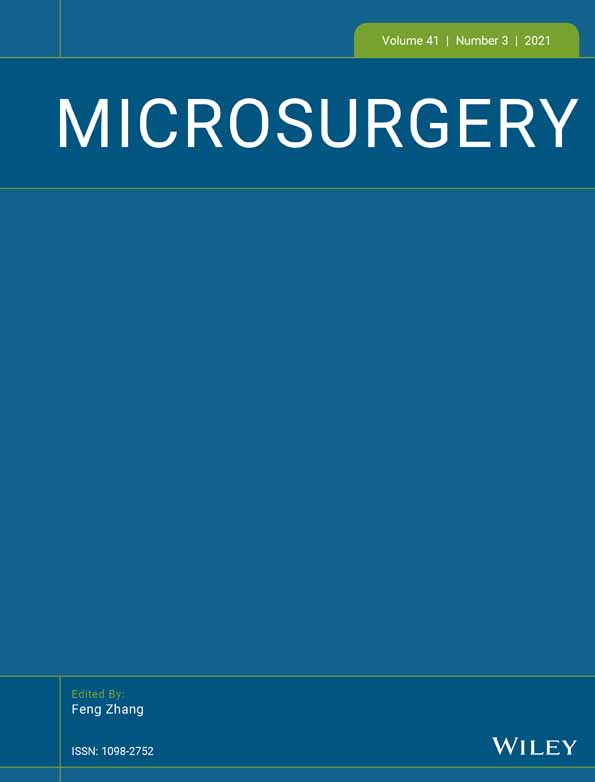Free superficial circumflex iliac artery perforator fascial flap for reconstruction of upper abdominal wall with extensive infected herniation: A case report
Abstract
Complex abdominal wall reconstruction is challenging, and vascularized fascia is preferred for active infection cases. Pedicled tensor fascia lata flap is commonly used for lower abdominal wall reconstruction, and free vascularized fascial flap based on the lateral circumflex femoral artery (LCFA) is used for upper abdominal wall reconstruction. However, LCFA-based flap transfer requires invasive and time-consuming muscle dissection and a large recipient vessel. The purpose of this report was to present a new application of superficial circumflex iliac artery (SCIA) perforator (SCIP)-based fascial flap for upper abdominal wall reconstruction. A 70-year-old male suffered from a long-lasting extensive abdominal wall herniation complicated with mesh infection and cutaneous fistulae following multiple herniation repair with synthetic mesh. After complete debridement of infected tissues, there was a 29 x 26 cm full-thickness abdominal wall defect. Components separation was performed to minimize the defect size, after which 12 x 7 cm defect remained in the upper abdominal wall. A 20 x 10 cm SCIP deep fascial flap was elevated based on the deep branch of the SCIA. The SCIP flap was transferred to the defect to reconstruct the upper abdominal wall. The SCIP was anastomosed to the deep inferior epigastric artery perforator with supermicrosurgical perforator-to-perforator anastomosis. Postoperative course was uneventful with good functional and esthetic results of the donor and recipient sites 11 months after the surgery. Although further studies are required, SCIP fascial flap may be an option for upper abdominal wall reconstruction.
Open Research
DATA AVAILABILITY STATEMENT
The datasets analyzed during the current study are not publicly available due to their containing information that could compromise the privacy of research participants but are available from the corresponding author on reasonable request.




